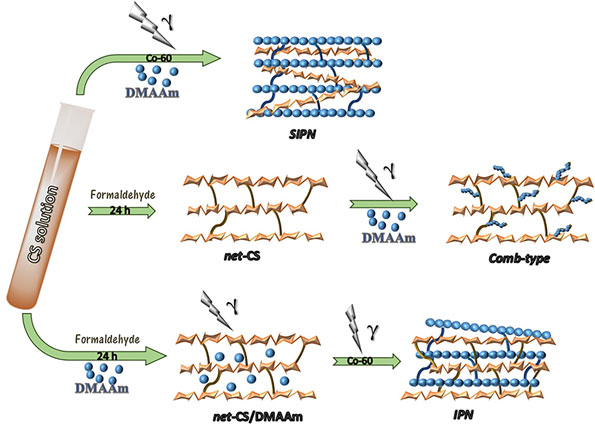Article contents
Different hydrogel architectures synthesized by gamma radiation based on chitosan and N,N-dimethylacrylamide
Published online by Cambridge University Press: 23 April 2018
Abstract

The present work focuses on the radiation-modification of chitosan (CS) with N,N-dimethylacrylamide (DMAAm) presented as three different architectures: comb-type grafting hydrogels (net-CS)-g-DMAAm, interpenetrating networks of CS and DMAAm (net-CS)-inter-(net-DMAAm), and semi-interpenetrating networks (net-DMAAm)-inter-CS. The syntheses of different polymeric architectures were realized by gamma irradiation by a 60Co source. The optimum conditions for the syntheses of the three systems were at a dose of 6 kGy. Only the comb-type system presented a well-defined critical pH. All the hydrogels showed porous and interconnected structures according to scanning electronic microscopy. These different architectures could be used as three-dimensional cell culture scaffolding.
- Type
- Research Letters
- Information
- Copyright
- Copyright © Materials Research Society 2018
References
- 7
- Cited by





